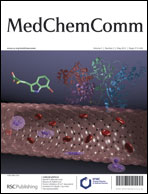 The cover of MedChemComm issue 5 is by Rudolf K. Allemann et al., whose concise article presents the synthesis of a series of monohalide mercaptoacrylic acid derivatives, and looks at the structure activity relationship in order to investigate the ability of these molecules to inhibit the Ca2+ activation of calpain-1, which is linked with tissue inflammation.
The cover of MedChemComm issue 5 is by Rudolf K. Allemann et al., whose concise article presents the synthesis of a series of monohalide mercaptoacrylic acid derivatives, and looks at the structure activity relationship in order to investigate the ability of these molecules to inhibit the Ca2+ activation of calpain-1, which is linked with tissue inflammation.
Potent inhibition of Ca2+-dependent activation of calpain-1 by novel mercaptoacrylates
Sarah E. Adams, Christian Parr, David J. Miller, Rudolf K. Allemann and Maurice B. Hallett
Med. Chem. Commun., 2012,
DOI: 10.1039/C2MD00280A
As with all our covers, this work will be free to access for the next 6 weeks.
You may also be interested in the 3 reviews in the issue on how enantiomeric pairs reveal that key medicinal chemistry parameters vary more than simple physical property based models can explain, small-molecule inhibitors of dimeric transcription factors and Gd(III) chelates for MRI contrast agents.
Find the entire issue right here











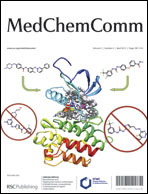
 On the cover of
On the cover of 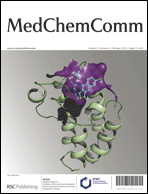 On the cover of this month’s issue is an article from our
On the cover of this month’s issue is an article from our 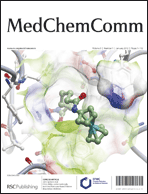 On the cover of this issue is work by John Spencer et al. on the synthesis of a small library of ferrocene-based HDAC inhibitors via click chemistry – click JAHAs. This article is from our forthcoming web collection on
On the cover of this issue is work by John Spencer et al. on the synthesis of a small library of ferrocene-based HDAC inhibitors via click chemistry – click JAHAs. This article is from our forthcoming web collection on 
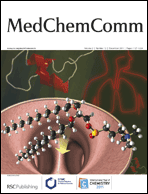



![CoverIssue[2]](https://blogs.rsc.org/md/files/2011/09/CoverIssue2.gif)
